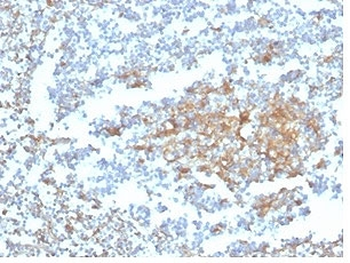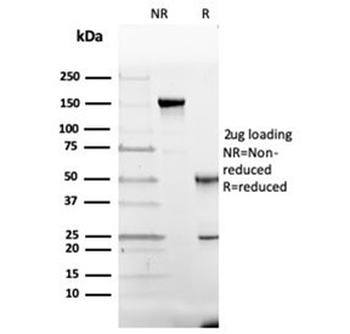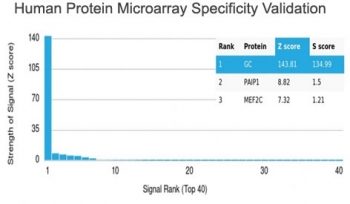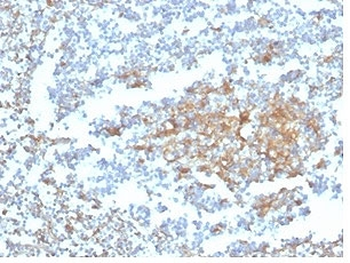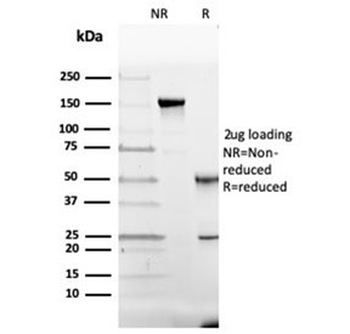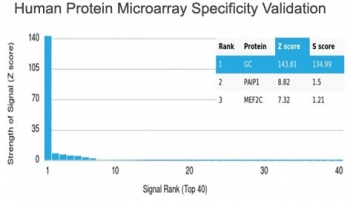You have no items in your shopping cart.
Vitamin D binding protein Antibody / VDBP / GC
Catalog Number: orb2635485
| Catalog Number | orb2635485 |
|---|---|
| Category | Antibodies |
| Description | Vitamin D-binding protein (DBP) is a multi-functional serum protein that binds to the plasma membranes of numerous cell types and mediates a variety of cellular functions. The locus of the DBP protein (also known as group-specific component protein or GC) is located at human chromosome 4q13.3. DBP functions in organ-specific transportation of vitamin D and its metabolites to the various target organs of the vitamin D endocrine system. In addition, DBP has immunomodulatory properties and is able to bind to the surface of leukocytes. DBP binds to the plasma membrane through a chondroitin sulfate proteoglycan. DBP serves as a co-chemotactic factor for C5a to enhance the chemotactic activity of C5a. DBP can also bind to globular Actin with high affinity and is involved in the clearance of Actin from the blood. DBP plays an important role in osteoclast differentiation. The diverse cellular functions of DBP require its cell surface binding ability to mediate different biological processes. |
| Species/Host | Mouse |
| Clonality | Monoclonal |
| Clone Number | VDBP/4482 |
| Tested applications | IHC-P |
| Reactivity | Human |
| Isotype | Mouse IgG2b, kappa |
| Immunogen | A portion of amino acids 35-175 was used as the immunogen for the Vitamin D binding protein antibody. |
| Dilution range | Immunohistochemistry (FFPE): 1-2ug/ml |
| Conjugation | Unconjugated |
| Formula | 0.2 mg/ml in 1X PBS with 0.1 mg/ml BSA (US sourced), 0.05% sodium azide |
| Hazard Information | This Vitamin D binding protein antibody is available for research use only. |
| UniProt ID | P02774 |
| Storage | Maintain refrigerated at 2-8°C for up to 2 weeks. For long term storage store at -20°C in small aliquots to prevent freeze-thaw cycles. |
| Note | For research use only |
| Application notes | Optimal dilution of the Vitamin D binding protein antibody should be determined by the researcher. |
| Expiration Date | 12 months from date of receipt. |

IHC staining of FFPE human pancreatic tissue with Vitamin D binding protein antibody (clone VDBP/4482) at 2 ug/ml in PBS for 30 min RT. HIER: boil tissue sections in pH9 10mM Tris with 1mM EDTA for 20 min and allow to cool before testing.
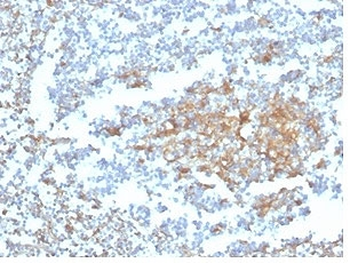
IHC staining of FFPE human tonsil tissue with Vitamin D binding protein antibody (clone VDBP/4482) at 2 ug/ml in PBS for 30 min RT. HIER: boil tissue sections in pH9 10mM Tris with 1mM EDTA for 20 min and allow to cool before testing.
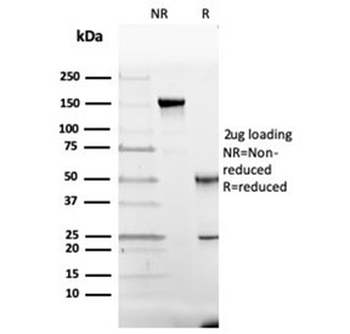
SDS-PAGE analysis of purified, BSA-free Vitamin D binding protein antibody (clone VDBP/4482) as confirmation of integrity and purity.
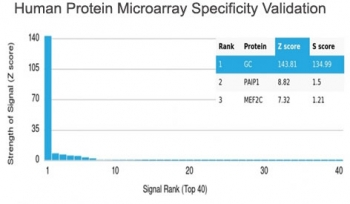
Analysis of HuProt (TM) microarray containing more than 19000 full-length human proteins using Vitamin D binding protein antibody (clone VDBP/4482). These results demonstrate the foremost specificity of the VDBP/4482 mAb. Z- and S- score: The Z-score represents the strength of a signal that an antibody (in combination with a fluorescently-tagged anti-IgG secondary Ab) produces when binding to a particular protein on the HuProt (TM) array. Z-scores are described in units of standard deviations (SD's) above the mean value of all signals generated on that array. If the targets on the HuProt (TM) are arranged in descending order of the Z-score, the S-score is the difference (also in units of SD's) between the Z-scores. The S-score therefore represents the relative target specificity of an Ab to its intended target.
Vitamin D binding protein Antibody / VDBP / GC [orb2635483]
IHC-P
Human
Mouse
Monoclonal
Unconjugated
100 μgVitamin D binding protein Antibody / VDBP / GC [orb2635484]
IHC-P
Human
Mouse
Monoclonal
Unconjugated
20 μg



